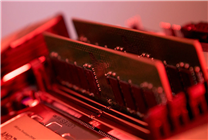Japan’s Semiconductor Strategy: A Boost for Micron and Local Innovation
Summary:
- Japan’s semiconductor industry is revitalizing its partnership with Micron through significant government subsidies.
- A total of 536 billion yen is earmarked to enhance Micron’s factory capabilities in Hiroshima.
- This investment not only strengthens local manufacturing but also fosters the development of advanced technologies in Japan.
As global economies increasingly recognize the strategic importance of semiconductors, Japan is taking bold steps to revitalize its semiconductor industry. The country, once a leader in semiconductor manufacturing—especially in memory chips—has shifted its strategy to attract leading international chip manufacturers. Recently, Japan’s government announced a significant allocation of 536 billion yen (approximately RMB 25.9 billion) aimed at supporting the expansion of Micron Technology’s manufacturing facilities in Hiroshima.
Reviving a Historical Leader
Japan historically dominated the semiconductor market, excelling particularly in memory and flash memory chips. However, over the years, the dominance has waned, necessitating collaboration with international firms like Micron. The recent injection of funds from the Japanese government represents a strategic shift, emphasizing the importance of local production intertwined with international expertise.
Strategic Financial Commitment
The breakdown of the 536 billion yen investment indicates a comprehensive strategy: 500 billion yen will be directed towards augmenting production lines, while an additional 36 billion yen will support the development of next-generation, high-capacity memory technologies. This move not only aims to bolster Micron’s capabilities but also positions Japan as a competitive player in cutting-edge memory technologies.
In exchange for these substantial subsidies, Micron has committed to investing 1.5 trillion yen in constructing a new chip factory in Japan by 2030. Notably, this means that approximately one-third of the total investment will be covered by government funding, an indication of Japan’s willingness to foster local manufacturing ecosystems.
Building Local Talent and Innovation
Beyond bolstering production capacity, the partnership with Micron is poised to stimulate local talent development. The initiative is designed to leverage Japanese manufacturers’ products and cultivate expertise within the regional workforce. This focus on nurturing local talent is critical as Japan seeks to regain its footing in the semiconductor sector and reduce reliance on foreign technologies.
Additionally, this isn’t the first time Japan has turned to Micron for support. The government previously provided two rounds of subsidies, with the total amount reaching 700 billion yen. This ongoing commitment underscores Japan’s strategy to foster long-term relationships with industry leaders to accelerate technological advancements.
Broader Impacts on Japan’s Semiconductor Landscape
Japan’s subsidies extend beyond just memory chips. For instance, the Kumamoto factory established by TSMC is also benefiting from government financial support. Furthermore, the emergence of Rapidus, a newly-formed company focused on developing the 2nm process technology, illustrates Japan’s broader ambition to lead in next-generation semiconductor technologies. With government backing, Rapidus plans to commence mass production by 2027.
Conclusion
Japan’s strategic investment in Micron signifies a crucial step in revitalizing its semiconductor industry, harnessing both foreign expertise and local capabilities. This initiative not only enhances production within Japan but also aims to cultivate a future-ready workforce equipped to handle advanced technologies. As the global semiconductor landscape evolves, Japan’s approach may serve as a model for other nations looking to enhance their technological competencies and ensure national security through self-sufficient production capabilities.
By fostering these alliances and investing heavily in local talent and infrastructure, Japan is not just aiming to reclaim its former glory in the semiconductor space but is also ensuring that it plays a pivotal role in shaping the industry’s future.








